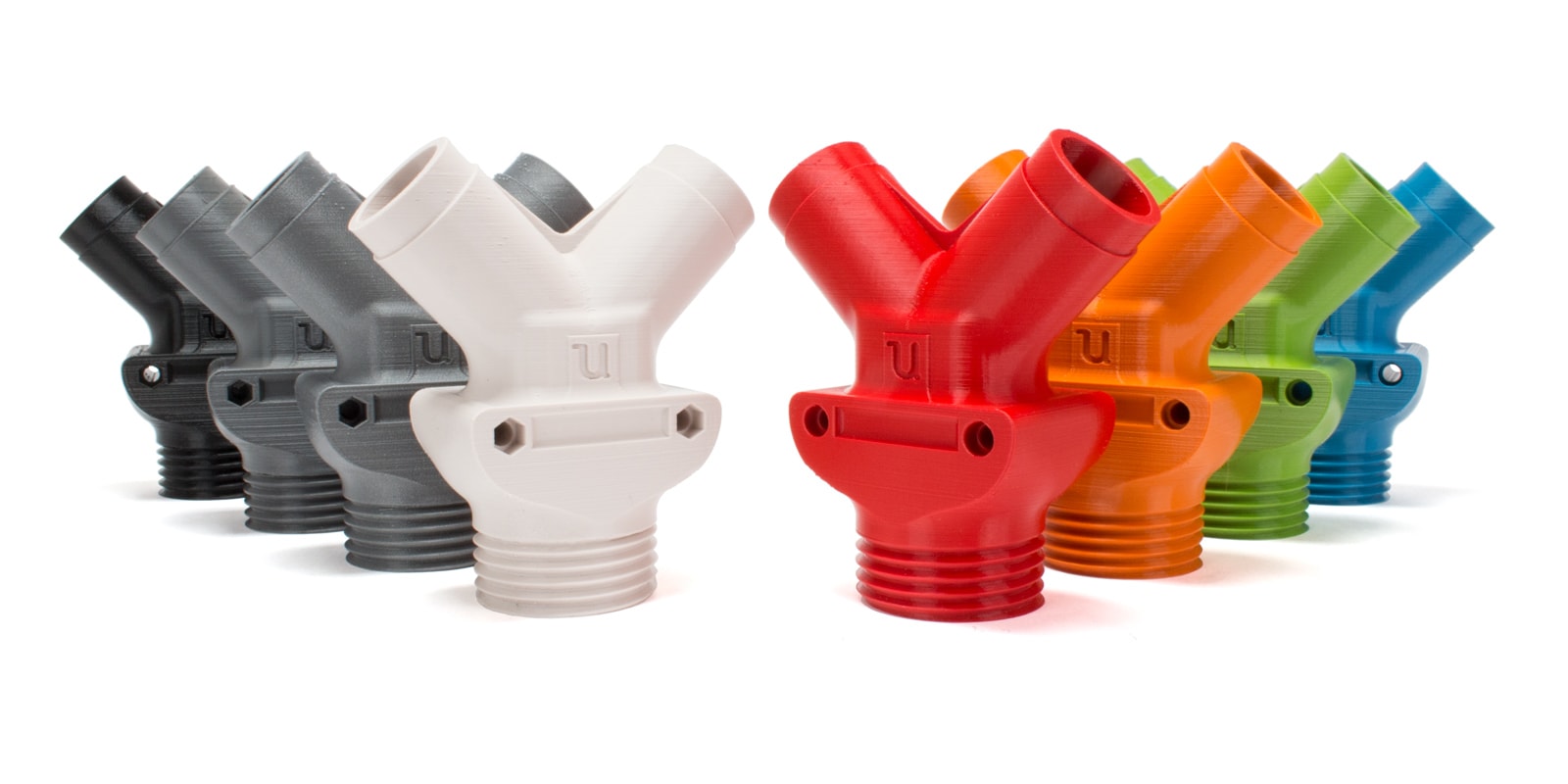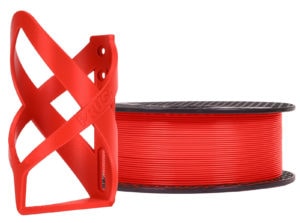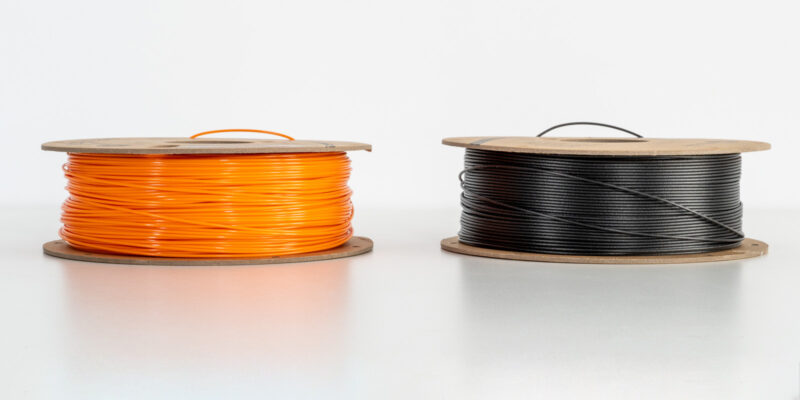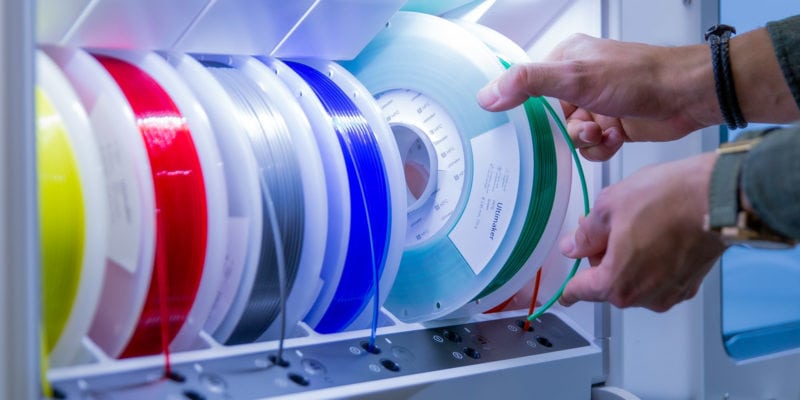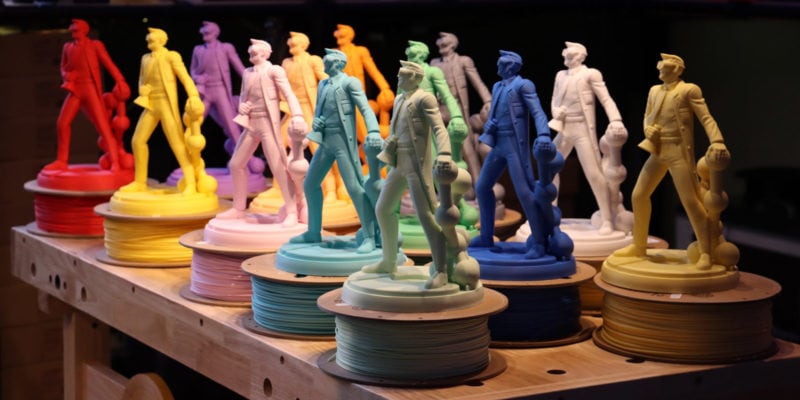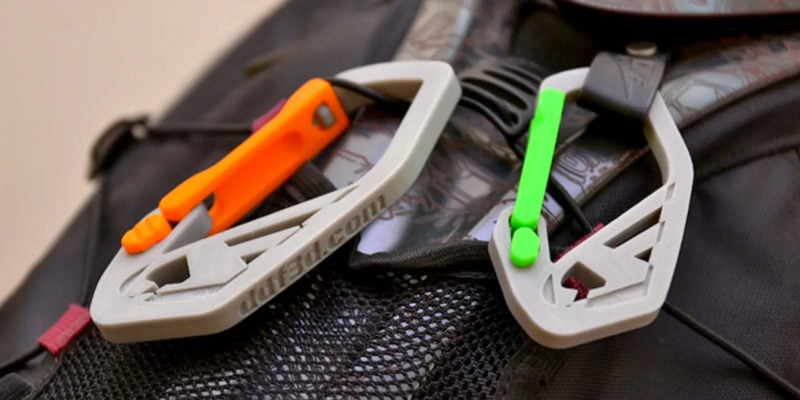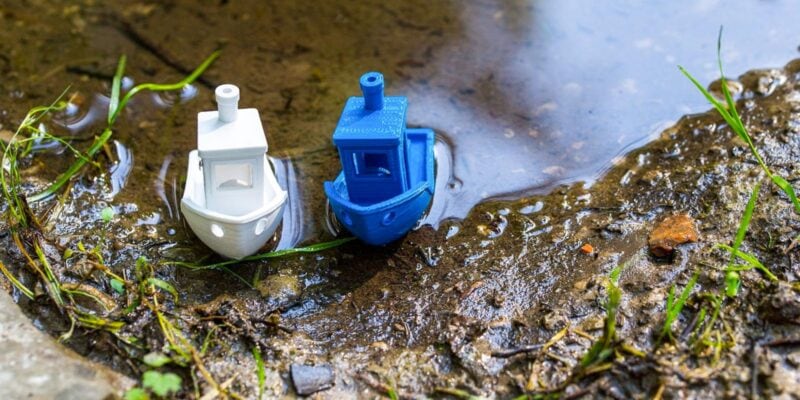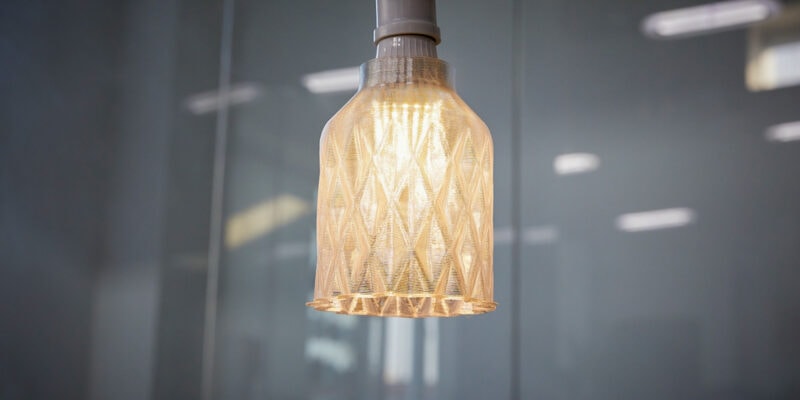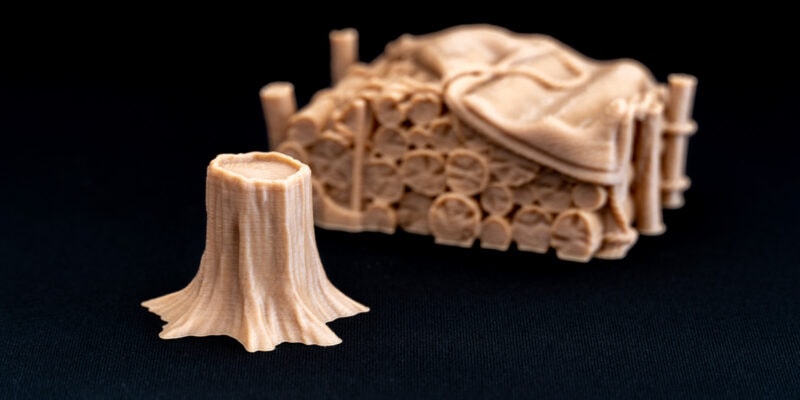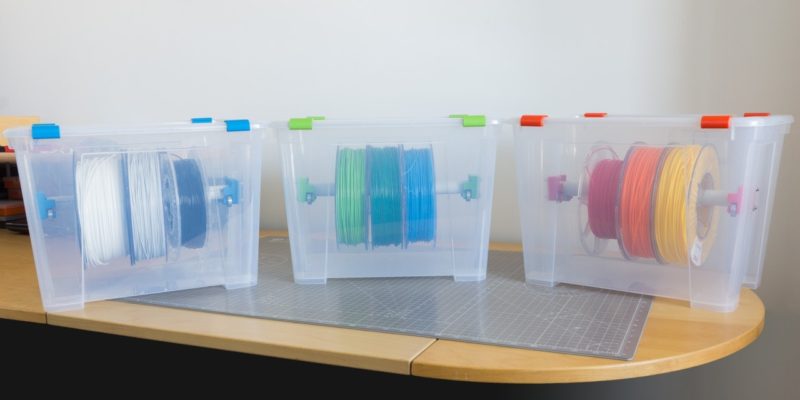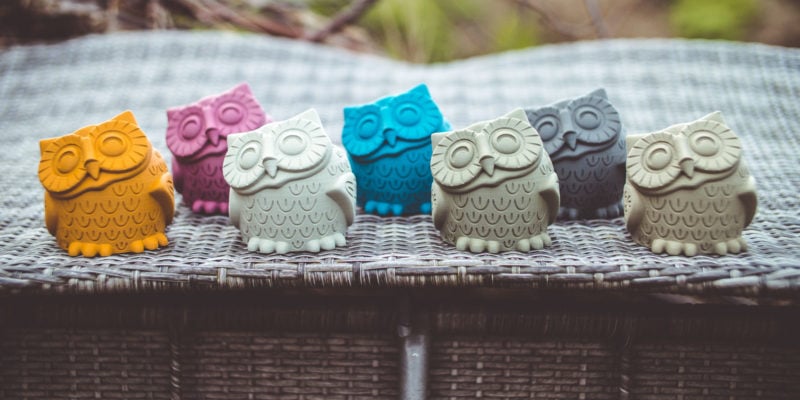Acrylonitrile styrene acrylate (ASA) filament is a 3D printing material that has risen in popularity thanks to its UV stability and high heat tolerances. However, it can be a difficult material to work with if you aren’t familiar with it and its properties can vary from brand to brand.
We’re going to cover the basics of ASA, what it is, how to use it, what to do to get the best results, and which brands of ASA filament are the best.
If you want to learn how to get started with 3D printing ASA filament, keep reading!
| Best ASA Filament | Colors | Accuracy | Diameter(s) | Spool Size(s) | Price (~) | Best Offer |
|---|---|---|---|---|---|---|
| Prusament ASA | 7 | ± 0.03mm | 1.75mm | 850g | $35 | |
| Polymaker ASA | 13 | ± 0.04mm | 1.75mm, 2.85mm | 1kg, 3kg | $30 | |
| 3DXTECH 3DXMax ASA | 13 | ± 0.05mm | 1.75mm, 2.85mm | 750g, 1kg | $42 | |
| Fillamentum ASA Extrafill | 13 | ± 0.05mm | 1.75mm, 2.85mm | 750g | $34 | |
| Colorfabb ASA | 2 | ± 0.10mm | 1.75mm, 2.85mm | 650g, 2kg | $18 | |
| FormFutura ApolloX ASA | 7 | ± 0.05mm | 1.75mm, 2.85mm | 250g, 750g, 2.3kg, 4.5kg, 8kg | $41 |
What is ASA Filament?
Acrylonitrile styrene acrylate (ASA) is a thermoplastic engineered to be a UV-stable alternative to ABS. It is a popular choice for industrial and outdoor applications and is often used to produce exterior automotive, RV, and boat parts, as well as outdoor furniture, tools, and exterior signage.
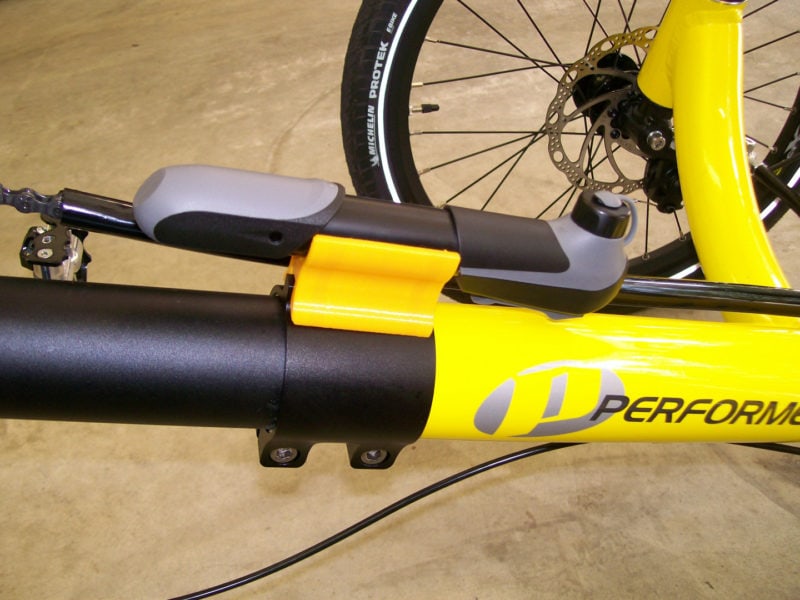
Advantages
ASA plastic is a durable material that has excellent heat, UV, water, wear, and impact resistance. Its heat resistance is higher than most printing materials with a glass transition temperature of about 112°C. This means you won’t start to see much (if any) warpage in ASA until around 90°C – 95°C.
While it doesn’t outperform PC (polycarbonate) filaments for tensile strength, ASA generally has better tensile strength than most other printing materials. Its other tough mechanical properties make it one of the top plastics in terms of overall durability.
ASA is also water-resistant. It can withstand exposure to water for quite some time before it starts to degrade. Coupled with its high UV-resistant characteristics, it is one of the best filament choices for weather exposure and outdoor applications.
Thanks to its high level of hardness, ASA is also easy to sand and post-process. It has good chemical resistance to many substances like alkalis, alcohols, oils, and more. Even so, it is acetone-soluble, so any contact with acetone will melt it. That means you can skip the sanding process and cold acetone smooth your prints to quickly and easily remove layer lines.
Unlike most popular 3D printing materials, ASA prints have a matte finish. This provides better print quality and makes it easier to hide the layer lines, so ASA parts look smoother than PLA, PETG, or ABS prints even without post-processing.
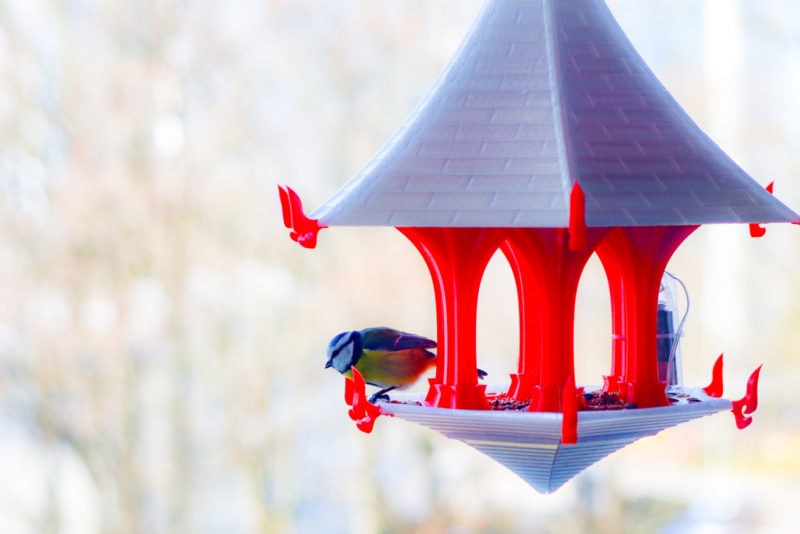
Disadvantages
ASA has many of the same disadvantages as ABS but to a lesser extent. ASA is also prone to shrinkage, which can cause warping (mostly with larger prints). Printing in a heated chamber and adding a skirt to your prints whenever possible can help you minimize bed adhesion issues.
Acrylonitrile styrene acrylate, as the name suggests, contains styrene, which produces fumes while printing that can be harmful if breathed in over extended periods of time. You should use an enclosed 3D printer and vent out the fumes when you print with ASA—especially if your 3D printer is located in an area where you or others will have a lot of exposure to the fumes.
Like most plastics, ASA is mildly hygroscopic, meaning that it absorbs moisture. It doesn’t degrade as much in water as many other common 3D printing materials do, but it does mean that you’ll need to dry your filament before use. Most manufacturers give you recommended drying settings for their specific filaments so you get the best possible results.
Finally, while ASA’s high heat resistance is generally considered an advantage, it also makes it much harder to work with than other filament types. It requires a higher nozzle and bed temperature than even ABS, so keeping large prints from cooling down too much during printing is even more difficult.
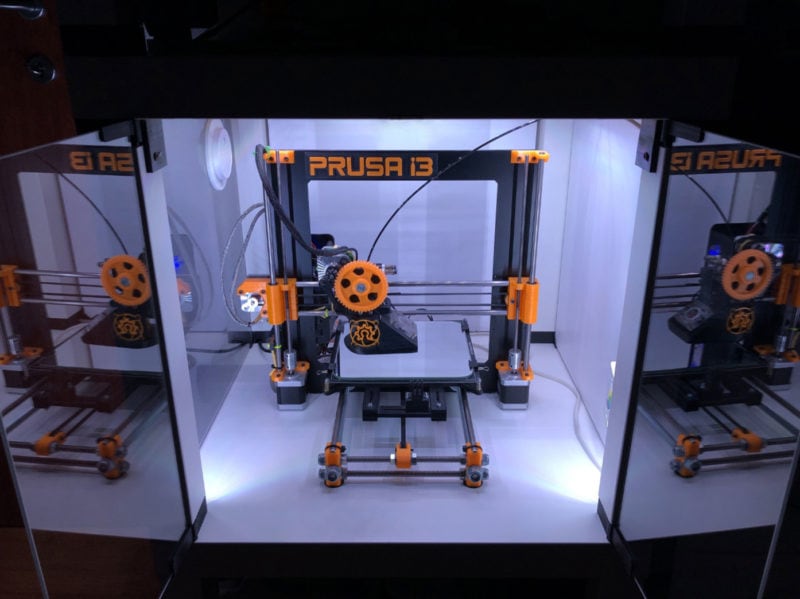
What is ASA filament used for?
Acrylonitrile styrene acrylate is an excellent choice for outdoor use because of its high heat and UV resistance. Most ASA filament brands can reach 90°C with no visible deformation, which makes them an excellent choice for prints that will spend a lot of time in the sun or in a hot car. Thanks to its UV resistance, it can stay in direct sunlight without degrading.
Its wear and impact resistance makes it a great option for industrial parts—especially ones that will have repeated mechanical stress. Rapid functional prototypes, tools, and various jigs are also common applications for ASA plastic.
Some outdoor applications that users tend to use ASA filaments for are bird feeders and houses, planters, hose adapters, and more.
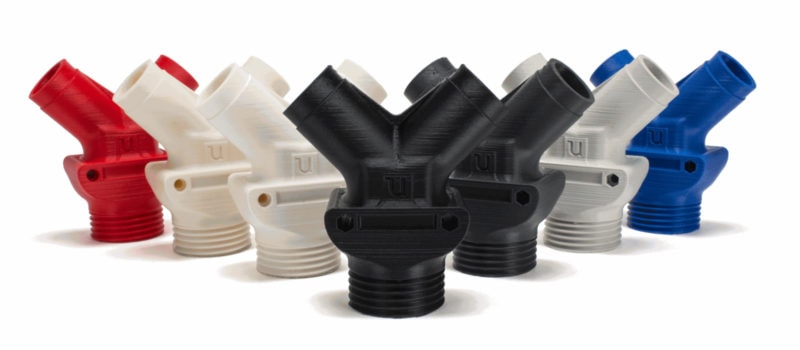
ASA vs ABS
ASA and ABS are two high-temperature filaments that are often used when a high level of heat resistance is needed. For a long time, ABS was considered the go-to filament choice for applications where the 3D print would be subjected to high temperatures. However, ASA can handle a higher temperature range than ABS.
Because they have high extruder and bed temperature properties, both ABS and ASA filaments have trouble with shrinkage and warping. They also both produce strong odors and potentially dangerous fumes while printing that need to be ventilated out.
Where the two materials really differ is in their UV resistance. ABS has a low tolerance for UV exposure and will discolor and break down in the sun. ASA, on the other hand, has excellent UV resistance and can handle long-term exposure to sunlight with little to no discoloration or deterioration.
ASA vs PETG
PETG is a versatile material that became a popular 3D printing option because it combines the easy printability of PLA with the greater durability of ABS. Like ASA filament, PETG is UV resistant, so it won’t turn yellow or structurally deteriorate in the sun. It also has high impact resistance and good tensile strength.
Where PETG differs from ASA filament most is the print settings. While PETG prints at a higher temperature than PLA, it prints colder than ABS and ASA. It also doesn’t require a heated bed (though many brands recommend one). PETG doesn’t shrink as much as ASA, so warping is less of an issue.
ASA filament, on the other hand, requires a heated bed to print correctly. Parts larger than a fist generally also need a heated chamber to keep from warping. Even so, ASA has little to no stringing whereas PETG is notorious for strings and blobs, so ASA filament tends to have a smoother print quality.
The Best ASA Filament Brands in 2024
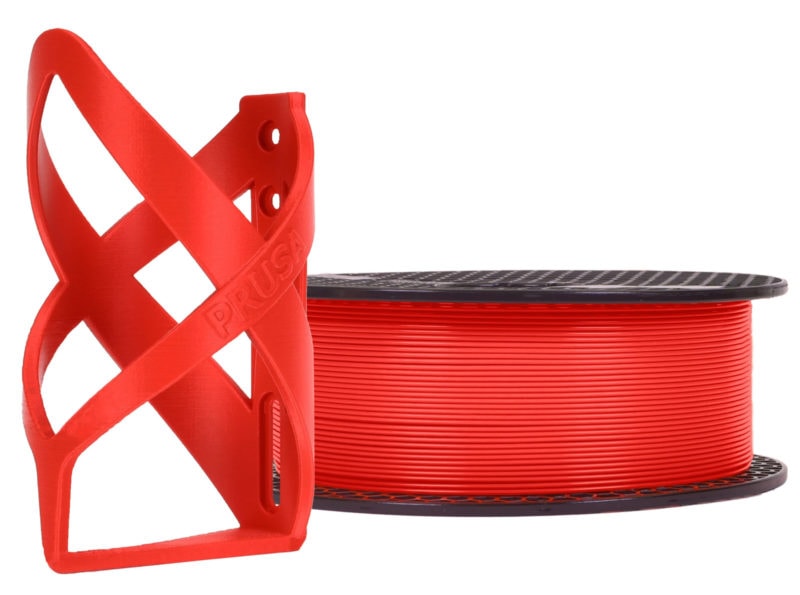
Prusament’s ASA filaments are a high-quality option made with excellent quality control and attention to detail. All Prusament ASA is manufactured with a +/-0.03mm dimensional accuracy to ensure smooth extrusion and clean prints.
With seven colors available, you don’t have many options for different shades. However, since ASA takes post-processing well, you can easily paint your 3D prints any color you’d like after printing.
Prusament ASA has a recommended extruder temperature range of 260 – 270°C and a bed temperature range of 110 – 115°C. These are some of the highest ranges you’ll see on this list, which means prints made from this filament have greater stability in high temperatures, but it also means it is more difficult to print with. You will most likely need an enclosure for your printer to successfully use Prusament.
Standout Features
- ±0.03mm tolerances
- 7 available colors
- Excellent quality control
Technical Details |
|
|---|---|
| Product Name | Prusament ASA |
| Printing Temperature Range | Nozzle: 260°C - 270°C Bed: 110°C - 115°C |
| Diameter(s) | 1.75mm |
| Spool Size(s) | 850g |
| Colors Available | Lipstick Red, Signal White, Jet Black, Natural, Galaxy Black, Orange, Sapphire Blue |
What We Like
- Good dimensional accuracy
- High heat resistance
- No stringing
Could Be Better
- Limited colors available
- High printing temps
For an affordable filament option that doesn’t compromise on quality, Polymaker’s PolyLite ASA product line is an excellent choice. With 13 different color options, you have a lot of versatility for how your finished prints will look. They also come in 1.75mm and 2.85mm diameters, so if you have a 3D printer that uses a larger diameter filament.
It has a lower nozzle and bed temperature setting than many other ASA filaments, meaning that it is a bit easier to print with. However, that also means it is less heat resistant than other brands. While the average glass transition temperature is approximately 112°C, PolyLite’s is about 98°C. Even so, it still has some of the highest heat resistance of all Polymaker’s filaments.
PolyLite ASA outperformed most other materials in Polymaker’s in-house testing. It rated higher than PolyLite ABS and PETG in heat tolerance, impact resistance (toughness), stiffness, and tensile strength tests. It outperformed PolyLite PLA in most tests as well, though the PLA did have an advantage in stiffness and tensile strength.
Standout Features
- Flexible color and size options
- Low print and bed temperature settings
- Durable mechanical properties
Technical Details |
|
|---|---|
| Printing Temperature Range | Nozzle: 240°C - 260°C Bed: 75°C - 95°C |
| Diameter(s) | 1.75mm, 2.85mm |
| Spool Size(s) | 1kg, 3kg |
| Colors Available | Black, White, Grey, Blue, Red, Green, Orange, Yellow, Purple, Teal, Natural, Army Green |
What We Like
- Several color options
- Available in 2.85mm
- High impact resistance
Could Be Better
- Lower heat resistance
- Not as tough as PLA
If you are looking for excellent printability with great strength and performance, 3DXMax ASA filaments certainly deliver. 3DXMax has even lower print and bed temperature settings than the PolyLite ASA but still maintains a glass transition temperature of about 105°C.
3DXMax filament is compatible with AquaTek X1 USM water-soluble support material. Soluble supports are an excellent option if you have a dual extruder 3D printer that can print two different materials at once. They are much easier to remove and require less cleanup than traditional supports.
They have 14 different colors and two filament diameters available. This ensures that you can easily find whatever size and color filament is needed for your project. All their ASA colors print with a matte finish, which looks more professional for industrial ASA prints and hides its layer lines better than the usual glossy look most filaments have.
Standout Features
- 105°C glass transition temp
- Matte print surface
- Water-soluble support compatibility
Technical Details |
|
|---|---|
| Printing Temperature Range | Nozzle: 235°C - 255°C Bed: 90°C - 110°C |
| Diameter(s) | 1.75mm, 2.85mm |
| Spool Size(s) | 750g, 1kg |
| Colors Available | Black, Dark Grey, White, Natural, Red, Orange, Flat Dark Earth, Yellow, Alpine Green, Green, Combat Green, Arctic Blue, Reflex Blue |
What We Like
- Wide color variety
- Easy to use
- ± 0.05mm dimensional accuracy
Could Be Better
- Lower heat resistance
- Color inconsistencies between spools
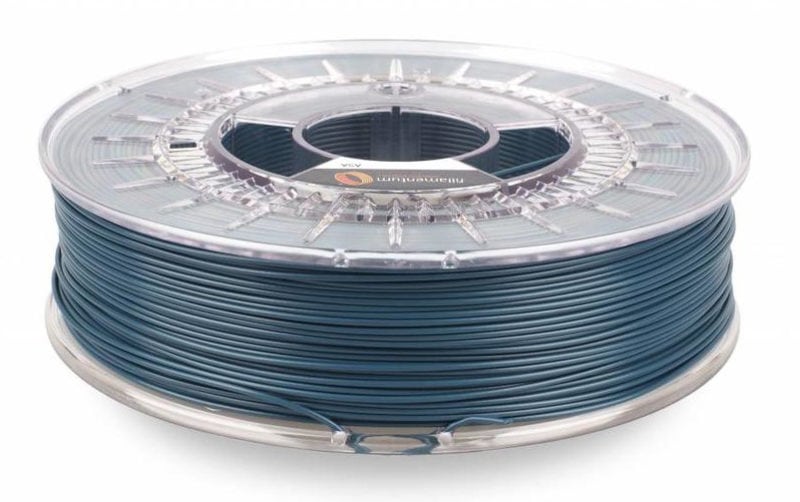
Fillamentum ASA Extrafill is a low-density filament with good mechanical properties for 3D printing durable parts. It is a versatile product that offers 16 different color options and two filament diameter sizes, so it will work with most 3D printers and projects.
It has high properties for elongation at break at 40%, which means it will stretch quite a bit before it breaks. Most of the ASA filament brands on this list tested around a 10% value for this. It also has decent tensile properties and excellent UV stability.
Standout Features
- 10 different colors
- ± 0.05mm dimensional accuracy
- Good tensile strength
Technical Details |
|
|---|---|
| Printing Temperature Range | Nozzle: 240°C - 255°C Bed: 80°C - 105°C |
| Diameter(s) | 1.75mm, 2.85mm |
| Spool Size(s) | 750g |
| Colors Available | Vertigo Grey, Snow White, Dijon Mustard, Vivid Pink, Traffic Black, Metallic Grey, Sky Blue, Traffic Yellow, Traffic Red, Traffic White, Natural, Green Grass, Grey Blue, Anthracite Grey, White Aluminium |
What We Like
- Excellent chemical resistance
- 40% elongation at break
- Non-yellowing
Could Be Better
- Very low heat resistance
- Low hardness
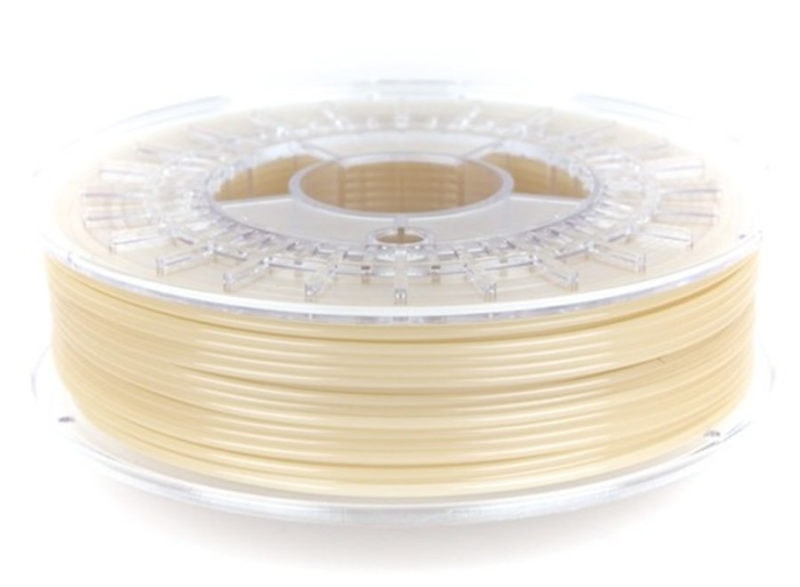
Colorfabb ASA is a good, basic ASA filament at an affordable price. It comes in up to a 2kg spool, which is perfect for large projects that are one long, continuous print. It’s also available in 1.75mm and 2.85mm diameters, so you aren’t limited if you have a 3D printer with a larger filament size.
Colorfabb only has two color options for ASA, so if you want your finished prints to have a different color, you will need to paint them. It is also manufactured with a ± 0.10mm dimensional accuracy tolerance, which is higher than the typical ± 0.05mm. However, it is still within an acceptable range and shouldn’t noticeably affect your print quality.
Standout Features
- Large 2kg spools
- 1.75mm and 2.85mm diameter options
Technical Details |
|
|---|---|
| Printing Temperature Range | Nozzle: 240°C - 260°C Bed: 90°C - 100°C |
| Diameter(s) | 1.75mm, 2.85mm |
| Spool Size(s) | 800g, 2kg |
| Colors Available | Black, Natural |
What We Like
- Great tensile strength
- 20% elongation at break
- Softens at 96°C
Could Be Better
- Very limited color choices
- Less precise dimensional accuracy
FormFutura’s ApolloX ASA filament is a specially-formulated material designed for improved printability without compromising ASA’s desirable mechanical properties. ApolloX has additional polymers added to it in order to produce a warp-free ASA filament. It also improved properties like filament flow, layer adhesion, strength, and printing precision.
ApolloX ASA comes in 7 colors, so you’re fairly limited in that regard unless you plan to paint your 3D prints yourself. However, they offer several spool sizes ranging from 250g to 8kg. The larger spools are an excellent option for when you have large parts that need to be printed in one piece. The large spools ensure you won’t have to change the spool partway through.
Even with their zero-warping formula, they suggest you use a heated enclosure set to 25°C – 30°C with their product (especially for large prints). Their products are manufactured with ± 0.05mm dimensional accuracy to ensure good print quality.
Standout Features
- Zero warping
- Precise printing
- Engineering-grade material
Technical Details |
|
|---|---|
| Printing Temperature Range | Nozzle: 235°C - 255°C Bed: 80°C - 100°C |
| Diameter(s) | 1.75mm, 2.85mm |
| Spool Size(s) | 250g, 750g, 2.3kg, 4.5kg, 8kg |
| Colors Available | Black, Dark Blue, Grey, Light Grey, Natural, Red, White |
What We Like
- Improved layer adhesion
- Good tensile strength
- Optimized ease of use
Could Be Better
- Impact strength lower than other brands
- Few color options
Tips for 3D Printing ASA Filament
- The best thing you can do when 3D printing ASA filament is making sure you have excellent bed adhesion. Add a skirt to your print to help prevent warping and will protect the print from cold drafts.
- It is also recommended to use a bed adhesive like ABS/ASA slurry, Magigoo, or PVA on a glass bed to ensure your print stays on the print bed. BuildTak or PET sheets are also a good build surface for keeping ASA stuck.
- Dry your filament before use. As mentioned above, ASA is hygroscopic, which means it absorbs moisture from its surrounding environment (including the air). Drying temperatures and times will vary from brand to brand, so check your manufacturer’s website for pre-printing instructions.
- Use your cooling fan sparingly. ASA needs little to no cooling during the printing process. For best results, keep your cooling fan off for the first layer and use the least amount of cooling necessary for subsequent layers.
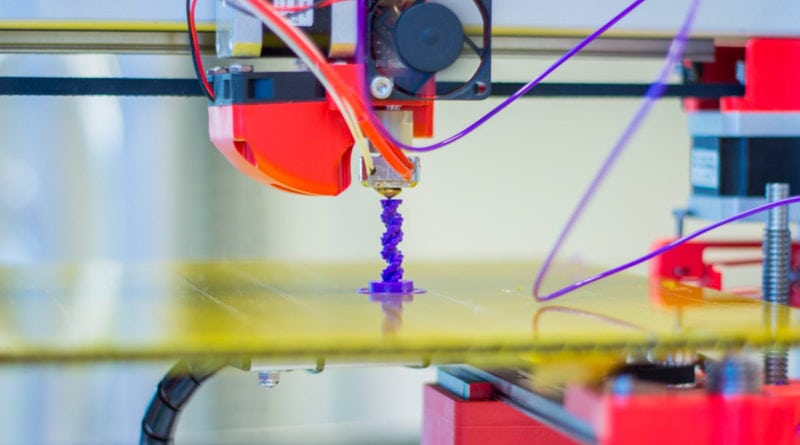
Is ASA Stronger Than PLA?
ASA tends to be more durable and tough than PLA. This is because ASA is less brittle and has better resistance to heat. However, both materials have their pros and cons, so it really depends on your needs as to which one you should choose. Strength is rarely the only factor to consider and neither of them is the strongest 3D printer filament.
Is ASA Filament Toxic?
Just like ABS, ASA filament releases toxic fumes during 3D printing. In fact, ASA is a little bit more toxic than ABS. Using an enclosed 3D printer with filtration or wearing a respirator when printing with ASA filament can help with this.
Is ASA the Same as ABS?
No, ASA filament is not the same as ABS filament. Both are thermoplastic polymers, but ASA comes with improved UV resistance and water resistance. This makes it a much better filament to use for outdoor applications.
Does ASA Warp Like ABS?
ASA and ABS filament materials share many similarities, including the potential to warp. To limit this, you can 3D print with a raft or brim, ensure proper print bed adhesion, and use a 3D printer enclosure.
Final Thoughts
Acrylonitrile styrene acrylate was developed as a UV-resistant alternative to ABS. Despite keeping some of ABS’s more difficult qualities like shrinkage, warping, and potentially dangerous fumes, ASA is a far more durable and versatile 3D printing material.
Like ABS, it can be difficult to print with because of its high print temperatures, but you can mitigate those issues with a good build surface, heated chamber, and the right brand of filament. Prusament ASA filament is our favorite option since it goes through such rigorous quality control.
Polymaker’s ASA filament is another great option worth mentioning because of its good pricing, as well as 3DXTECH’s 3DXMax ASA for its range of colors and superb mechanical properties.
Do you have any questions about 3D printing with ASA? Let us know in the comments!
